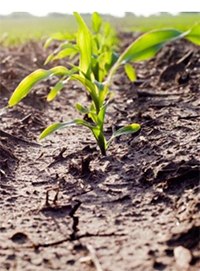
The land is an essential natural resource for farmers who depend on it for their livelihood and to feed a growing world population. For years, farmers have worked to preserve soil health, protect water quality and build sustainable solutions. Protecting the environment through responsible farming practices is not only good for Mother Nature but also for the growers for whom farming is their legacy.
Many nutrient-loss reduction initiatives focus on keeping nitrogen where it should be to prevent loss through leaching into groundwater and reduce denitrification that releases greenhouse gases into the atmosphere.
“The Illinois Nutrient Loss Reduction Strategy is a framework for using science, technology and industry experience to assess and reduce nutrient loss to Illinois waters and, ultimately, the Gulf of Mexico,” said Jean Payne, president of the Illinois Fertilizer and Chemical Association. “The Illinois Nutrient Loss Reduction Strategy builds upon existing programs — many of which farmers have been practicing for decades — to reduce nutrient loss. The initiatives promote increased collaboration, research and innovation among the private sector, academia, nonprofits, wastewater agencies, municipality waterworks, and state and local government. Success will require all stakeholders — agriculture and municipalities alike — to closely collaborate and accept their evolving and increasing mutual participation role.”
Similar to the Illinois Nutrient Loss Reduction Strategy, Iowa, Minnesota and Indiana utilize nutrient-loss reduction plans that focus on a well-rounded approach to improving land and water health and overall sustainability. And, several states’ nutrient-loss reduction initiatives recommend the use of a nitrogen stabilizer as a proven and sound practice in efforts to reduce nitrogen loss.
“Nitrification inhibitors are an important component of in-field recommendations,” Payne said. “N-Serve has a long-documented history of effectively reducing nitrogen loss through leaching and denitrification. As a grower, you need to look closely at ways to reduce loss potential, and nitrification inhibitors are an investment that you’re making to reduce loss. If farmers can reduce and mitigate the loss component, then it’s also a plus on their bottom line. Part of our message to farmers is to use these products because they help keep the product in the ammonium form longer, which means it remains in a nonleachable state for a longer period after application.”
Farmers seeking to implement an effective strategy focused on nitrogen efficiency use a variety of in-field practices, including the careful calculation of rate, source and timing of nitrogen applications; use of a nitrification inhibitor; and cover crops. Another successful strategy that keeps nitrogen where it belongs — and increases yield — is to use a nitrogen stabilizer, such as Instinct NXTGEN® - or N-Serve® nitrogen stabilizers. Studies on the active ingredient in Instinct NXTGEN and N-Serve show that soil nitrogen retention increased by 28% and decreased nitrogen leaching by almost 16%. In 2014, Instinct NXTGEN added 50 million bushels of additional corn equating to over $205 million in additional production revenue for U.S. corn growers and reduced carbon dioxide emissions by about 664,000 metric tons, according to the EPA.
Municipal wastewater treatment plants, industries and farmers in numerous states have collaborated for years to implement practices that are making meaningful and measurable progress toward reducing nitrogen loss. Success depends upon the ongoing adoption of proven practices, such as nitrification inhibitors. This in-field nitrogen-loss reduction practice underscores the sound science and positive results from scores of in-field trials conducted with N-Serve and Instinct NXTGEN®.
Instinct NXTGEN is not registered for sale or use in all states. Contact your state pesticide regulatory agency to determine if a product is registered for sale or use in your state. Federal law does not require any person who applies or supervises the use of Instinct NXTGEN to be certified in accordance with EPA regulations and state, territorial and tribal laws. Some states may have additional requirements related to liquid manure and nitrogen stabilizers. Be sure to consult your state or local Extension service to understand your requirements. When applying Instinct NXTGEN to deep pits, appropriate manure agitation safety steps should be followed. Instinct NXTGEN should be applied directly to the deep pit prior to pumping the pit; a thorough agitation system must be operating in order to evenly distribute Instinct NXTGEN® within the deep pit; applicators and handlers of Instinct NXTGEN and manure treated with Instinct NXTGEN are required to use proper protective equipment as stated on the product label; air ventilation systems must be operational inside barns. Do not fall-apply anhydrous ammonia south of Highway 16 in the state of Illinois. Always read and follow label directions.
The More You Grow
Find expert insights on agronomics, crop protection, farm operations and more.